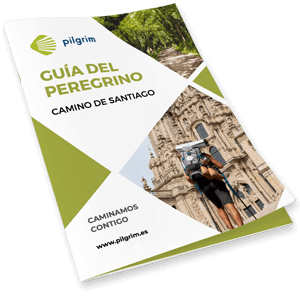O Barco de Valdeorras
‹ Back to the stage
O Barco de Valdeorras
- Residents: 13.785 aprox.
- Province: Ourense
Information
Get to know O Barco de Valdeorras
This famous Galician town is believed to have been populated since the primitive era. There are petroglyphs and castreño settlements and it is thought that its current name comes from a population that lived in these lands hundreds of years ago, the Gegurros, deriving the name in val-de-giorres.
On the other hand, being located between mountains, next to the Sil river, the name of O Barco, may have Celtic roots, by barc/barg, which means concavity.
<pLocation
How to get there
To get to O Barco de Valdeorras the best way is to take the A-6 highway in Ponferrada and leave it to join the national road N-536. Another option is the A-52 highway; go to A Guidiña and connect with the OU-533 road to Rúa and take the N-120 to O Barco.
The town is also connected by train from Ourense or Ponferrada. To arrive by bus it is possible from Madrid, Ponferrada, Ourense, Santiago, etc.
History / Culture
What to see
La Villa del Castro
In La Villa del Castro you can find some traces of the ancient fortress of the Castro, Pimentel and Sarmiento lineage (also known as Counts of Ribadavia).
In La Villa del Castro you can find some traces of the ancient fortress of the Castro, Pimentel and Sarmiento lineage (also known as Counts of Ribadavia).
Another piece to highlight is the parish temple, the Carballo house but, above all, the Pazo de Flórez. This farmhouse is from the year 1630 and predominates over the rest of the constructions by its facade with six arches of an incarnated stone.
INFORMATION OF INTEREST
E-mail: info@pazodocastro.com Web: pazodocastro.com Telephone: 988 347 423
Phone: 988 347 423
All the information you need is to contact us at: info@pazodocastro.com

Torre y Fortaleza de O Castro
The Tower and Fortress of O Castro are well known throughout the region of Valdeorras and has had the distinction of Bien de Interés Cultural (BIC) since 1994.
It is a medieval building dating from the fourteenth century, but the current construction differs from the original, as it suffered several destructions in the last period of the fifteenth century. It was rebuilt and refurbished years later and, in the 18th century, it began to be used as a prison. But once the lordships were suspended in the 19th century, it was abandoned and, little by little, its conservation worsened.
Years later the tower was recovered and, later, the reform of the complex was completed with an iron staircase of modern design with landings that function as a viewpoint.

Monasterio de Xagoaza
The church of San Miguel was built in the 12th century in Romanesque style, as we can see in the windows and the apse. Inside we find a Maltese Cross, which means that the temple was managed by the Order of St. Xoan of Jerusalem.
It was not until the 18th century when the monastery was built. At present this space is used as a winery and godello wines are produced.
INFORMATION OF INTEREST
We are not sure how to get to the monastery.
Telephone: 988 325 309

O Teixadal
O Teixadal is a magnificent natural area that has been declared one of the most important in Europe. Many of the sacred trees found here are more than 2,000 years old and some of these are located high in the Trevinca Mountains, at an altitude of more than 2,000 meters.
O Teixadal is a magnificent natural area that has been declared one of the most important in Europe.

Iglesia de San Mauro
The parish church of San Mauro stands in the main square of the town center of O Barco de Valdeorras. At first glance it presents elements of a late Gothic style that can be seen both in the cover and in the windows.
The facade of the building shows a clear sobriety, in which stands out notably the decoration of the portico entrance, arranged with elements of neoclassical style.
The facade of the building shows a clear sobriety, in which stands out notably the decoration of the portico entrance, arranged with elements of neoclassical style.
MASS HOURS
Winter Weekdays and eves at 19:00 Holidays at 09:30Summer Weekdays and vespers at 20:00 Holidays at 09:30
INFORMATION OF INTEREST
E-mail: rodrgueztoms@gmail.comTeléfono: 988 321 448

Espacios Naturales
Valdeorras has a very interesting landscape attraction due to the vineyards on the slopes and the groves of centenary chestnut trees, especially in autumn, when the forests are dyed in different shades of brown and orange.
Valdeorras has a very interesting landscape attraction due to the vineyards on the slopes and the groves of centenary chestnut trees, especially in autumn, when the forests are dyed in different shades of brown and orange.
Among its natural spaces highlights the Natural Park of the Sierra de la Encina de la Lastra, declared a Special Protection Area for Birds (SPA). It has an immense Mediterranean flora, calcareous formations and a great variety of birds.
We can not forget the Trevinca Massif, with peaks that reach over 200 meters high within which there is a beautiful grove, El Teixadal de Casaio, charming rivers such as Xares or Pastora, relaxing lagoons and many traces of ancient glaciations.
<p
Information of interest
Local police
988 322 939
Civil guard
988 320 381
Fire department
112
Civil protection
616 402 882
Town hall
988 832 010
Health center
988 325 794
Tourism office
988 347 425
Rúa a Veiguiña, 5

We send you your itinerary
Enter your details and receive your travel itinerary by email
Recommended
Gastronomy
Recommended
Festivals and Pilgrimages
Local festivity
Carnaval: Diversas actividades
Local festivity
El día 6 de cada mes: Feria de Viloira
Local festivity
14 de Septiembre: Festas do Cristo y el famoso descenso del río Sil
Winter Way
On foot
10 stages












